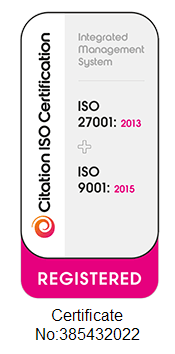Debt doesn’t always have to be bad news. Of course, we would all love to be debt-free, but debt doesn’t always mean doom and gloom. However, if you are going to take on debt, it should be something worth going into debt for and not something that could land you in a financial nightmare.
What Is Good Debt?
Good debt is a debt that will benefit your future or enable you to become financially better off further down the line. For example, a sensible investment such as a mortgage to purchase a home or as a solid investment is good debt. Mortgages are often cheaper per month than rent, and once paid off, the home is yours and you can live mortgage/rent-free. Additionally, when purchased as an investment, you can even make money by selling the property further down the line.
Student loans are also considered good debt. Graduates have far better job prospects and a higher likelihood of earning a bigger salary. The same goes for investing in other kinds of further education or training courses.
If you run or own your own business, investing in it so that it can grow would be considered good debt too. If you have a solid business plan and put in the hard work needed for it to become a success, your business could eventually be worth a lot more money than the loan you originally took out to expand it.
Credit experts Equifax consider good debt to be a loan that is taken out with careful consideration, that is within your credit limit and budgeted for affordable repayments. They believe that “if you stay within your credit limit and pay back your debt on time each month, this can positively affect your credit report.”
What Is Bad Debt?
In contrast to those good debts, bad debt is one that drains your resources in repayments, will not “pay for itself” in the future and does not benefit your professional development. Bad debt may even put you in a position whereby you cannot afford your usual lifestyle or default on usual bills due to the unaffordable repayments.
Debt is usually considered to be “bad debt” when it is unaffordable to the individual. Many unnecessary items — such as cars or luxury holidays — are also considered bad debt because they either depreciate in value immediately or hold no value at all. However, the kind of debt that is considered a real “no-no” is borrowing money to repay debt, unless you consolidate your debts and no longer spend on the lines of credit you have cleared. If you are struggling to reach the end of every month and have tried budgeting to no avail, take a look at our information on Debt Management Plans or contact us for more information.
How Much Is Too Much Debt?
A great way of keeping an eye on your finances, and whether you should apply for that credit purchase or save up for it the old fashioned way, is to work out your debt-to-income ratio (DTI).
A debt-to-income ratio (DTI) is one of the many factors that lenders look at when making a decision on your lending criteria. But it’s not just lenders that should be interested in this. Your DTI will help you to monitor your income and expenses, get a better understanding of where you may need to cut back and where you may have some flexibility!
How to Work Out Your Debt-to-Income Ratio (DTI)
- Add up all of your monthly debt payments. This should include mortgage payments, loans, store credit, student loans, credit cards and any other form of debt. It may be a good idea to add an estimated payment amount for a loan you are considering to this total. This way, you will get a true reflection of your DTI after this new debt is added.
- Now add up your total income. Include your gross monthly income, any child benefit and anything earned through freelancing.
- Divide your monthly debt by your monthly income and multiply by 100. The result is your DTI as a percentage.
Income ÷ Debt x 100 = DTI
Average Household Debt in the UK
According to Credit Connect, “More than half of the UK consumers (almost 27 million), [went] into 2020 in debt, with almost five million owing over £10,000 in loans and credit”, excluding mortgages.
The Money Charity’s most recent report (January 2021) states that the average household has £60,729 of debt, including mortgages. It also found that the average unsecured debt per household was £3,838 and the average credit card debt was £2,133.
If you are concerned about your level of debt and your ability to keep up with your repayments, don’t hesitate to contact Debt Movement today to chat with one of our friendly advisors, who will assess your situation and give professional, non-biased guidance.
How to Manage Debt
Sometimes, managing debt can be easier said than done. There may have been some unforeseen circumstances such as a job loss or a relationship breakdown, or you may have had to borrow more money than you intended due to an unexpected expense.
Take a look at our budgeting ideas to get top tips for managing your money to get yourself back on track. If you would like further information or guidance, request a free callback to speak with one of our expert guides today.
You can download our FREE personal budget tool in Excel here.
How to Get Out of Debt
If debt has become a problem and it has gotten to the point that you are missing payments, defaulting or being chased by debt collection agencies or even bailiffs, contact Debt Movement today. Our friendly expert guides will help you to understand your options when it comes to managing your debt and whether you could benefit from a debt solution. So call today and begin your journey to financial freedom.













